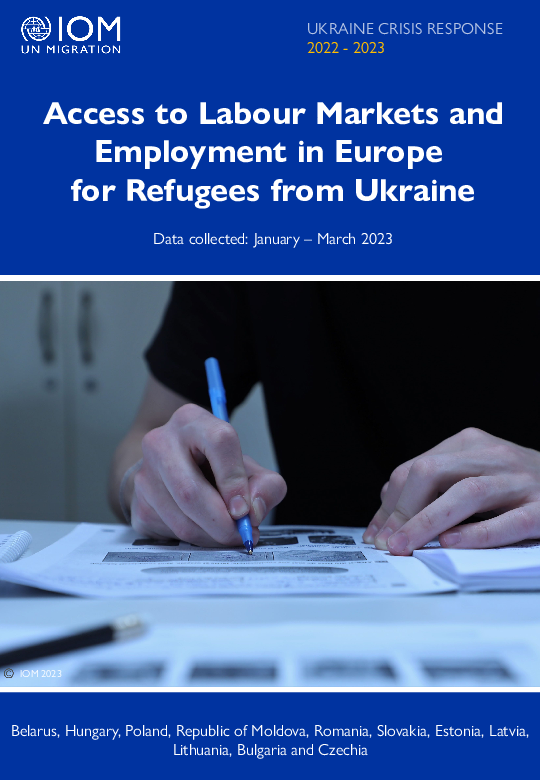-
Countries
-
Data and Analysis
-
Special Focus
-
Crisis Responses
Ukraine Response — Regional Quarterly Overview — Access to Labour Markets and Employment in Europe for Refugees from Ukraine (Jan-Mar 2023)
The report focuses on “stayers” of working-age, respondents who intend to settle or have settled already and who are between 18 and 64 years of age (58% of the total sample). Stayers who are 65 years old or more (non-working age) (11%) and respondents who are transiting, not intending to stay in the country of the survey (31%), are not the focus of the present analysis.
- High economic activity: refugees from Ukraine intending to stay in the country of displacement and being of working-age (18-64 years old) show a high level of economic activity on average (66%) which is only slightly lower than the activity rate they had in Ukraine before displacement (70%). Activity rates are comparable to those reported for the total resident population of the country of displacement.
- Most (65%) of those at working-age who are currently inactive (not in employment and not looking for a job) have care duties for other family members (e.g. children, older persons and persons with a disability), because they have a medical condition on their own or they are on maternity/paternity leave. The remaining are retirees (22%), students (11%) or do not specify (2%).
- Among those active, more than half (62%) is in employment (employed, self-employed, daily worker) while the remaining 38 per cent is unemployed and looking for a job. On average, unemployment rate is higher among women than among men (40% versus 30%).
- Full or some knowledge of the official language of the host country is associated with higher shares of employment (71% versus 58% of those with no local language knowledge at all).
- Language is also by far the most common barrier when looking for a job, reported by three quarters of respondents in search of employment. Other barriers frequently mentioned are the lack of jobs in the area of residence (46%), difficult reconciliation of family duties and working arrangements (24%), health conditions (19%) and discrimination (16%). Among active population, respondents speaking the local language have employment rates 13 percentage points higher on average than those who do not (“language premium”).
- The education level marks a difference in terms of type of occupation and sectors among those who have a job at the time of the interview, although it is not directly associated with higher or lower employment rate on average. Those with tertiary education were more frequently in a professional category (30%), working in services and sales (15%), in elementary occupations (15%) and as clerks (8%) while those with secondary education or lower reported to be in elementary occupations (30%), to work in services and sales (19%), as plant or machine operators (18%) or in crafts and related trades (9%).
